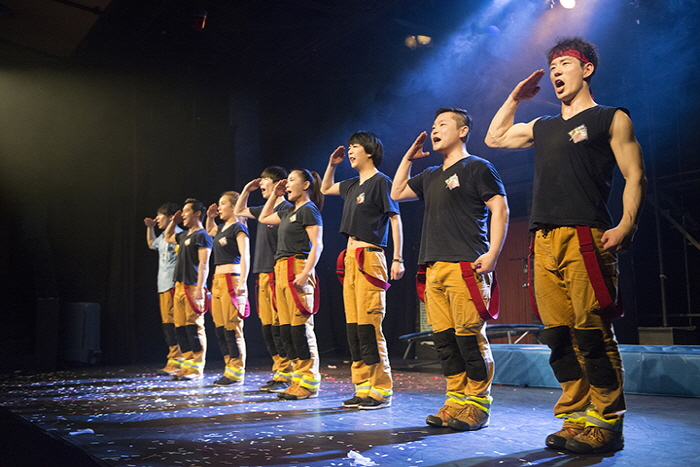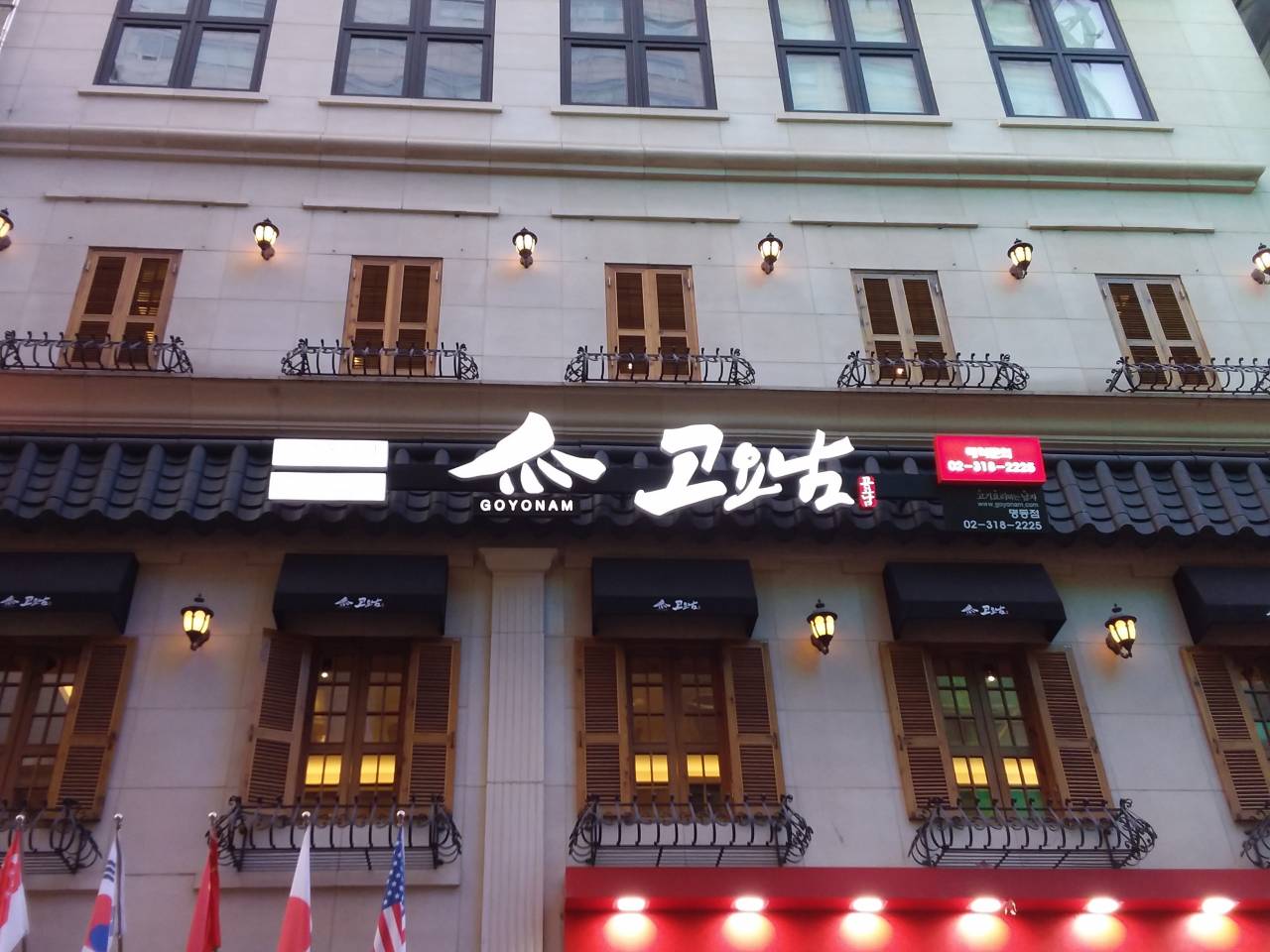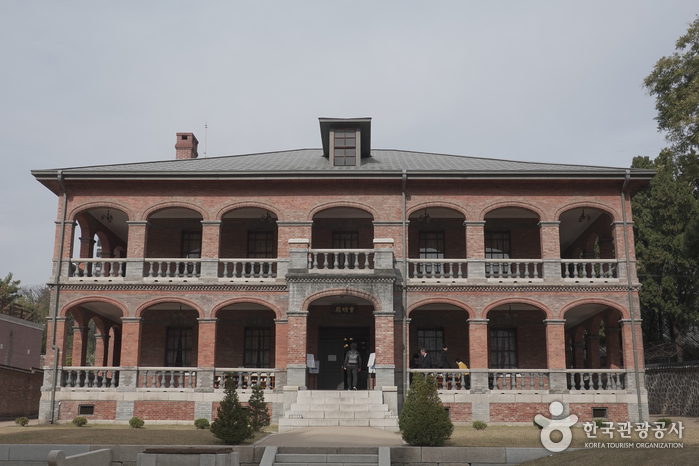Myungbo Art Hall (명보아트홀)
1.2Km 2025-04-15
47 Mareunnae-ro, Jung-gu, Seoul
Located in Euljiro 3(sam)-ga, the heart of Seoul, Myungbo Art Hall is a cultural complex that consists of a professional theatre hall. Renovated from Myungbo Theater in 2009, Myungbo Art Hall is equipped with state-of-the-arts lighting and sound equipment that guarantees high-quality theatre experience for the audience. In addition, the hall also has comfortable seats along with other amenities for the audience's convenience. Myungbo Art Hall aims to globalize Korean performance culture by creating a variety of content that incorporate Korean theatre with tourism. This area is also where the house of Admiral Yi Sun-sin was located, which is honored with a memorial plaque listing his accomplishments.
Chebudong Janchijip Dwaejigalbi (체부동잔치집돼지갈비)
1.2Km 2024-03-18
24 Jahamun-ro 1-gil, Jongno-gu, Seoul
+82-2-722-3555
Chebudong Janchijip Dwaejigalbi is a restaurant where marinated pork galbi are grilled over charcoal fire. It offers various side dishes along with rich soybean paste jjigae. Enjoying cold buckwheat noodles with the tender marinated pork galbi, which are well-aged, is also recommended. Additionally, there are individual menu items such as dubu jeongol (bean curd hot pot), hoe naengmyeon (cold buckwheat noodles with raw fish), bibimbap, and gamjajeon (potato pancake).
Tosokchon Samgyetang (토속촌삼계탕)
1.2Km 2024-03-12
5 Jahamun-ro 5-gil, Jongno-gu, Seoul
+82-2-737-7444
Tosokchon Samgyetang is a restaurant specializing in samgyetang (ginseng chicken soup) near Gyeongbokgung Palace. It is housed in several renovated traditional hanok buildings, exuding a nostalgic atmosphere. Samgyetang is a traditional Korean nutritious food made by simmering cleaned young chicken with ginseng, jujube, sweet rice batter, and various nuts. The thick broth of samgyetang, served alongside ginseng liquor, stimulates the appetite. Diced radish kimchi and cabbage kimchi are served as basic side dishes.
Non-verbal Performance FIREMAN (넌버벌 퍼포먼스 FIREMAN)
1.2Km 2020-04-03
47, Mareunnae-ro, Jung-gu, Seoul
• 1330 Travel Hotline: +82-2-1330 (Korean, English, Japanese, Chinese) • For more info: +82-2-6271-1190
"Fireman" is a non-verbal performance that portrays the growth and development of silly and carefree trainees into courageous and trustworthy firefighters. The stage will grab the attention of the audience with acrobatic techniques, parkour, and b-boying movements. International audience can enjoy the show without any language barrier as the performance is non-verbal, meaning the play is carried out using only body movements and facial expressions to deliver the story. Since its first stage in 2015, the act went on an international tour and won the Grand Prize in Popular Culture category during the Korea Hallyu Awards in 2016.
GOYONAM - Myeongdong Branch (고요남 명동)
1.2Km 2021-03-19
10, Myeongdong 8na-gil, Jung-gu, Seoul
+82-2-318-2225
This is a Korean cuisine located in Myeong-dong, Seoul. A restaurant well-known for the large meat attached to bone and 55cm-long yukhoe chobap (a dish of raw slices of beef served over pressed vinegar rice). The representative menu is grilled beef ribs.
Jeonju Hoegwan (전주회관)
1.2Km 2019-08-31
32-1, Sejong-daero 14-gil, Jung-gu, Seoul
82-2-778-6689
Well-known among both Koreans and foreigners, this restaurant has been specializing in traditional Korean dishes for more than 50 years. Its gopdol bibimbap is patented and also the most popular dish in the restaurant.
Jungmyeongjeon Hall (중명전)
1.2Km 2025-01-09
41-11, Jeongdong-gil, Jung-gu, Seoul
+82-2-752-7525
Located near Deoksugung Palace, Jungmyeongjeon Hall is a red-brick modern Western-style building. It was built in 1899 as the imperial library of the Korean Empire. After Deoksugung Palace caught on fire in 1904, the place became the temporary residence of Emperor Gojong. It also witnessed the tragic part of history in which the infamous Eulsa Treaty (Japan-Korea Protectorate Treaty), an illegal treaty forced by Japan, was signed in 1905. Its exhibition hall serves as a place for historical education.
Bank of Korea Money Museum (화폐박물관)
1.2Km 2024-03-18
39 Namdaemun-ro, Jung-gu, Seoul
This Renaissance-style three-story stone building is the museum of the Bank of Korea. The older Bank of Korea was established as the central bank of the Korean Empire in 1909 and has been designated as a National Historical Site. During the Japanese colonial period, the bank was renamed the Bank of Joseon, and the building was used as the main and head office of the Bank of Korea until 2001. The building has been used as the nation’s Money Museum since June 2001 in celebration of the 50th anniversary of the Bank of Korea. The museum has 13 exhibition rooms on two floors, with one basement floor and two above-ground floors. It holds special exhibitions of various currency and art collections to provide domestic and foreign visitors with the opportunity to enjoy the history and culture of currency. Visitors can learn about the Bank of Korea and the central banking system, as well as how to identify counterfeit notes and how money is produced and circulated. It is also a good place for children to learn about currencies from around the world. Advance reservations are required, and parking is not available. The museum can easily be reached via subway by getting off at Hoehyeon Station (Seoul Subway Line 4) and exiting through Exit 7.





 English
English
 한국어
한국어 日本語
日本語 中文(简体)
中文(简体) Deutsch
Deutsch Français
Français Español
Español Русский
Русский